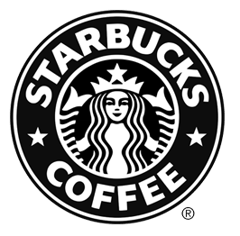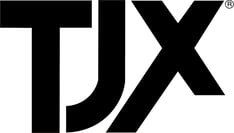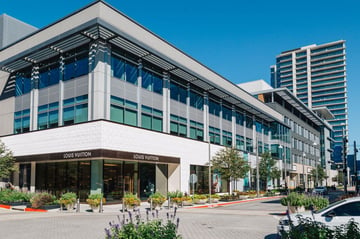













While retail’s comeback has been going on for several years now, not all store formats are benefitting from the resurgence. Outside of a small uptick after the pandemic, department stores have seen sales decline every year in this century. The Wall Street Journal’s Kate King looks at why department stores are continuing to lose share with the consumer and what mall owners are doing about it. Read More >>

Costco has fundamentally changed the way millions of Americans shop over the last 40 years. From its origins in the Pacific Northwest to a global phenomenon with over 700 stores where you can buy everything from toothbrush heads to whole pigs, Costco is a major player in world commodities markets (half the world’s cashews are sold at Costco). Ben Ryder Howe visits Costco stores in Alaska, New York and Texas to find out what keeps shoppers coming back. Read More >>

Video of the Month: After a lackluster 1st quarter, analysts are looking to this month’s retailer earnings to understand how the consumer is feeling heading into the all important Holiday shopping season. Simeon Siegel from BMO Capital Markets sat down with CNBC to discuss what he’s been seeing and what other new trends are emerging. Watch here >>



On a recent vacation in Seattle, as my family and I walked through the throngs of cruise ship travelers at Pike Place Market to see the famous fish throwers and hopefully get our hands on what were promised to be the best donuts in town, it became obvious from several blocks away that another attraction had people lining up in the sweltering heat (a rarity in the cool Northwest): the first Starbucks. Well, technically the Starbucks on Pike Street isn’t the first, but it is the oldest still in existence.

From its humble origins in the early 1970s bringing Italian style café culture to Seattle, then a burgeoning metropolis whose growth was fueled in part by the aerospace industry and a futuristic vision from the 1962 World’s Fair, Starbucks and its iconic siren logo has come to be the face of coffee the world over. With over 38,000 locations worldwide, no matter where you live, you’re close to a Starbucks. In the US, the average Starbucks location has 3.6 other stores within one mile and in Manhattan, the furthest you’d ever have to walk to get a pumpkin spice latte is 1,300 feet (about 2 city blocks). Internationally, Starbucks has also seen explosive growth and the company’s largest market is soon expected to be in China. Much like Coca-Cola and McDonald’s before it, Starbucks has become one of America’s biggest brand exports.
Not only does Starbucks have a hold on coffee drinkers, they are also quite prodigious when it comes to real estate. A 2015 report from Zillow found that homes within a quarter mile of a Starbucks increased in price 31% more than homes further away from the coffee giant. As the company has pivoted to more drive-thru locations, they are one of the most desired tenants in the retail real estate space. Over 500 cafes opened in 2023 throughout North America and a stand-alone Starbucks on a NNN lease can often sell for sub-5% cap rates.
However, recent quarterly results show that the company is starting to show signs of slowing its monumental growth. US sales dropped by 3% last year, while sales from loyalty program members fell 4%. There are many headwinds facing Starbucks in the US now. Inflation has seen coffee prices escalate and Starbucks has followed suit but given their reputation for being at the higher end of the market on price, this has led many customers to cut back or quit the company altogether. The rise in mobile ordering has also seen service quality decline especially for those customers who still prefer to order in store. Meanwhile, a growing number of regional and national drive-thru coffee chains are beginning their own rapid growth plans. Dutch Bros, Scooter’s, 7 Brew, and Biggby are among dozens of new brands with private equity backing that are sprouting up across the country to take a sip of Starbucks market share.
To address these slumping sales, Starbucks’ Board recently lured Chipotle CEO Brian Niccol away from his job to the tune of $85 million and a private office near his Southern California home. Niccol radically transformed Chipotle’s operations following a foodborne illness scare in 2017 that led to at least 1,100 people becoming sick at their restaurants. As CEO, Niccol introduced new menu items and refined Chipotle’s loyalty program while also addressing food prep concerns by having more ingredients prepared at centralized locations. The results speak for themselves as Chipotle continues to grow sales and store count, while their stock was up around 250% during Niccol’s tenure.
Can he work his same magic at the most iconic coffee brand the world has ever known? The problems at Starbucks are different than those facing Chipotle. Niccol’s operational expertise should address the service issues, while improving inflation metrics could cool down the price increases. However, it’s worth wondering whether the world (or at least the US) has reached “peak Starbucks” – the question I’ll be asking about the company in the coming years is: how much more can you grow when you’re already everywhere? No matter the outcome, this will be one of the most interesting stories in retail to follow.
Mike Jordan
 Listen to the Song of the Month
Listen to the Song of the MonthSong of the Month: In 1975, singer Michael McDonald was couch surfing and playing small clubs in Orange County, California when he got a call to join the Doobie Brothers on tour in Louisiana. From there, he would become a full time band member and his first written contribution was the title track to their 1976 album Takin’ it to the Streets. A gospel inspired anthem whose message is just as important today as it was 48 years ago. Listen here >>
